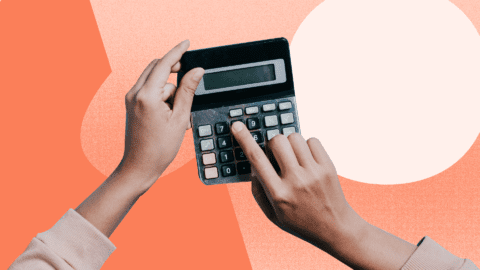Binary Calculator
A powerful calculator for binary conversions and operations
Decimal to Binary
Binary to Decimal
Binary Operations
Bitwise Operations
Convert Decimal to Binary
Please enter a valid non-negative integer
Binary Result
Learn about decimal to binary conversion
To convert a decimal number to binary:
- Divide the decimal number by 2.
- Get the remainder for the binary digit.
- Divide the quotient by 2.
- Repeat until the quotient becomes 0.
- Read the remainders from bottom to top.
Example: 42 decimal to binary
42 ÷ 2 = 21 remainder 0
21 ÷ 2 = 10 remainder 1
10 ÷ 2 = 5 remainder 0
5 ÷ 2 = 2 remainder 1
2 ÷ 2 = 1 remainder 0
1 ÷ 2 = 0 remainder 1
Reading from bottom to top: 101010
Convert Binary to Decimal
Please enter a valid binary number (only 0s and 1s)
Decimal Result
Learn about binary to decimal conversion
To convert a binary number to decimal:
- Write down the binary number.
- Starting from the rightmost digit, label the positions as 2^0, 2^1, 2^2, etc.
- For each position with a 1, add the corresponding power of 2.
Example: 101010 binary to decimal
1 × 2^5 = 32
0 × 2^4 = 0
1 × 2^3 = 8
0 × 2^2 = 0
1 × 2^1 = 2
0 × 2^0 = 0
Sum: 32 + 0 + 8 + 0 + 2 + 0 = 42
Binary Arithmetic Operations
Please enter a valid binary number (only 0s and 1s)
Addition (+)
Subtraction (-)
Multiplication (×)
Division (÷)
Please enter a valid binary number (only 0s and 1s)
Result
Bitwise Operations
Please enter a valid binary number (only 0s and 1s)
AND (&)
OR (|)
XOR (^)
NOT (~)
Shift Left (<<)
Shift Right (>>)
Please enter a valid binary number (only 0s and 1s)
Result
Learn about bitwise operations
Bitwise operations work on each bit position individually:
- AND (&): Returns 1 if both bits are 1, otherwise 0. Example: 1010 & 1100 = 1000
- OR (|): Returns 1 if at least one bit is 1, otherwise 0. Example: 1010 | 1100 = 1110
- XOR (^): Returns 1 if exactly one bit is 1, otherwise 0. Example: 1010 ^ 1100 = 0110
- NOT (~): Flips all bits (0 becomes 1, 1 becomes 0). Example: ~1010 = 0101
- Shift Left (<<): Moves all bits to the left, filling with 0s. Example: 1010 << 2 = 101000
- Shift Right (>>): Moves all bits to the right, discarding excess. Example: 1010 >> 2 = 10
About Binary Calculator
- A binary calculator is a specialized tool used in digital computations to help human users perform mathematical tasks using binary, or base-2, number systems. Unlike the traditional calculators that operate with decimal numbers (base-10), a binary calculator deals specifically with binaries, which are integral to digital systems and computer operations.
- Binary numbers are expressed as sequences of 1s and 0s. This two-symbol system is the basis for all sorts of computations in digital computers, digital systems, and data transmissions. It’s from here that the need for a binary calculator becomes apparent — it simplifies complex operations and mathematical computations involving binary numbers.
- A binary calculator primarily helps to add, subtract, multiply, and divide binary numbers. More advanced models offer functions such as bitwise shifting, where binary numbers are shifted left or right, and logical operations like AND, OR, and NOT.
- For instance, if you want to add two binary numbers, such as 1010 (which is the binary representation of the decimal number 10) and 1111 (which represents 15), a binary calculator can quickly provide the result (10101, which is 21 in decimal). This direct computational capability benefits both experienced programmers and those learning about digital systems.
- Additionally, the binary calculator also aids in conversions between binary, decimal, hexadecimal, and octal systems. This ability to switch between different number systems is immensely useful, particularly when dealing with low-level programming or network protocols where values may need to be viewed in various formats.
- The interface of a binary calculator has been designed to make it user-friendly for individuals accustomed to working in binary systems. With simplicity and ease-of-use in mind, a typical binary calculator layout includes digital keys for ‘1’ and ‘0,’ the four arithmetic function symbols, and perhaps additional keys for performing features like binary shifts, bit rotation, and logical operations.
- It is worth mentioning that there are also many online binary calculators and related software tools available on the internet. These platforms provide all the functions of a hardware-based binary calculator with added advantages like ease of access, multiple user-friendly features, no maintenance requirements, and usually free usage.
- Moreover, a binary calculator also plays a pivotal role in education, especially for students learning computer science, digital electronics, or related fields. By utilizing a binary calculator, a student can gain a deeper understanding of how computers and their basic operations work. It helps to clear concepts related to different computing methods and brings abstraction to a physical level for learners.
- As computers have become more woven into the fabric of our daily life, so too has the binary system, which forms their fundamental underpinnings. As such, the ability to readily manipulate and comprehend binary numbers — facilitated by tools like the binary calculator — has proven invaluable across various domains, from data communication to computer architecture to software development.

